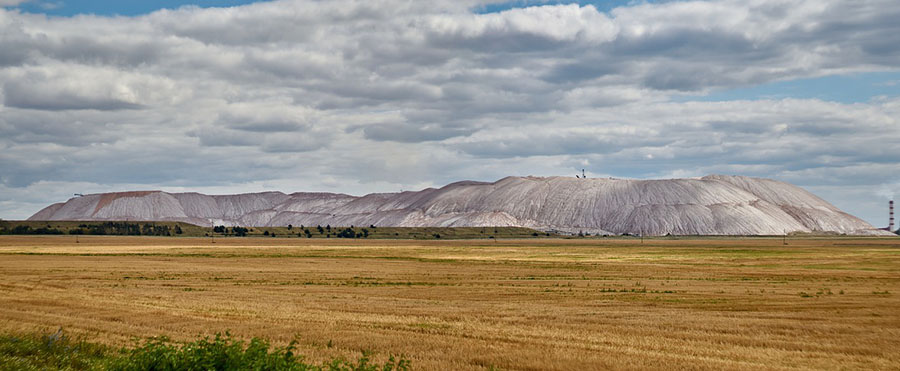The Energy Report: Carolyn, what will the global potash market look like in Q4/12?
Carolyn Dennis: Indications are that the potash market will be slow in Q4/12, largely due to the expected delay of contracts in China and India until late 2012 or early 2013. As a result of this delay, both PotashCorp. (POT:TSX; POT:NYSE) and Uralkali (URKA:RTS; URKA:MCX; URKA:LSE) announced inventory-related shutdowns in October.
The good news is that demand in North America appears to be normal. (There had been some concern that farmers would apply less potash this year due to early harvests and droughts.) We also expect some support from Brazil because it went into its planting season with high crop prices.
TER: But the picture is a little bit different for other nutrients; demand for nitrogen is higher than potash right now, correct?
CD: We expect relatively normal growth in nitrogen—specifically urea and ammonia. That market is growing in the 1.5–2% range (urea is growing faster than ammonia). While potash and phosphate application can be skipped for periods of time, nitrogen is applied to the soil every year, so we expect relatively normal demand there. The phosphate market, in comparison, has been relatively soft. In general, most of the nutrients have been exhibiting softening growth profiles going into early 2013.
TER: Just a couple of years ago, demand for potash was expected to grow at 4.5%. Two percent growth is far off that expectation. What happened?
CD: We are forecasting that over the next couple of years, potash growth will be over 3%, higher than nitrogen and phosphate, which are around 1.5–2%.
India, in particular, has cut back on potash application recently. At some point, Indian farmers will have to add potash to the soil because going too long without potash will damage the soil. In the short term, issues in India such as subsidies will affect demand, but in the longer term we expect potash demand growth to return.
We never really achieved that 4–5% growth rate on a prolonged basis, but we expect potash demand to grow marginally higher than the other two nutrients going forward.
TER: What is the demand story in China?
CD: Demand has been relatively flat, but while purchases are down, built-up inventories are depleting. Therefore, we expect growth in the new year, although that growth is likely to be on the low side. China buys its potash on contract, as does India. With the Indians delaying their contract, the Chinese have likely been waiting to see what the new price will be. However, on PotashCorp's recent quarterly call, it was indicated that the Chinese were currently in negotiation and expected to finalize a contract by the end of the year. We are seeing some delay, which would indicate a modestly high price.
TER: Has Canpotex, the joint venture between PotashCorp, Agrium Inc. (AGU:NYSE; AGU:TSX) and The Mosaic Co. (MOS:NYSE), priced itself out of the market?
CD: I would not say that. Pricing is a bit of an art and supported by the discipline of the producers. These prices were obtained earlier in the year, so there is no reason not to come back and purchase at these prices again.
In India, however, we are seeing some issues with government subsidies. India is favoring nitrogen over potash and phosphate right now in terms of subsidizing its farmers. That creates less demand for potash. In addition, there is inventory in the system, so pricing may have to come off a bit, but I do not think there is massive overpricing at this point.
TER: What do you see as two or three trends that should generate investor interest in the fertilizer sector through 2015?
CD: One trend is the reduced margin volatility for North American nitrogen producers. Urea and ammonia are typically more volatile and have lower margins than phosphate and potash. However, low gas prices in North America are allowing producers like Agrium to enjoy healthy, more stable margins because the prices are being set globally by the marginal producers in the Ukraine and Europe, who pay more for gas feedstock. We expect some softening of ammonia and urea prices and a modest increase in North American gas prices and therefore, margins should tighten, but we still expect a $150–250/ton margin in nitrogen over the next few years. This might help nitrogen valuation multiples expand, which makes this an interesting place for investors to be.
Another trend is the creation of shareholder value by returning cash to investors. We expect both PotashCorp and Agrium to continue to invest for growth, but we definitely see more of a focus on yield, evidenced by numerous recent announcements of dividend increases.
TER: Agrium boosted its dividend to $2/share last month, which sent the stock price up marginally in Toronto. Does a dividend of 2% really interest investors?
CD: For investors who want exposure to the agriculture and fertilizer space, these names are proving to be defensive by paying some cash back to the shareholders. That is definitely helpful in a market where returns are difficult to get. These are cyclical stocks, so in the slower times you get a yield while retaining the potential for capital appreciation.
But if you are a yield investor, there are definitely other sectors that pay higher dividends.
TER: What are PotashCorp's and Mosaic's dividends?
CD: PotashCorp's is $0.84/share, which is about a 2% yield. Mosaic's yield is just under 2%. They are in line with each other.
TER: You recently launched coverage of Agrium and PotashCorp. Why did you choose those two companies?
CD: Dundee is well known for its coverage of resources, primarily mining and oil and gas. We are building out our fertilizer and agriculture platform. We chose to start with Canadian fertilizer producers for a couple of reasons.
First, they play a major role in defining the market, especially PotashCorp, the market leader in the potash oligopoly. It is important to understand the market dynamics and the end markets if you are going to cover the junior mining companies; you gain that understanding by covering the market leaders.
Second, we believe that many investors are looking for defensive investments today. Despite the cyclical headwinds, these producers can be good defensive investments in the fertilizer sector. We believe the long-term growth profile for fertilizers is compelling and there is limited downside in our coverage companies at these stock prices.
The producers are mature companies, subject to cyclicality and typically used as trading vehicles, obviously different from an investment in a junior miner. The producers are generally lower beta and lower risk, given their market capitalization, history of operation and cash generation profile. However, significant investment returns can be made in a short time period by timing the market properly (although returns are generally lower for the producers). Junior miners are generally higher-beta and higher-risk investments but can offer very high returns. The catch is that the outcome can be binary if companies do not secure financing due to factors such as low demand, technical issues and/or weak capital and funding markets.
We are looking at a number of potash and phosphate juniors and will be publishing more on them soon. We are generally expanding coverage of the fertilizer and agriculture sectors, so stay tuned.
TER: Agrium has a lot of exposure to nitrogen, and it also has an activist investor. Can you tell us what that investor, JANA Partners LLC, is doing to boost Agrium's share price?
CD: JANA is focused on increasing shareholder value. It has identified a number of areas where Agrium can increase the value of its stock and provide better returns for shareholders.
Agrium is unique in that it is a diversified fertilizer producer and controls its own retail distribution. It has more downstream operations than the other fertilizer producers. Originally, JANA Partners talked about spinning out the retail business, the argument being that the retail division is undervalued and spinning it out would increase awareness and create shareholder value. We have seen less focus on that idea lately.
The recent focus has been on increasing the dividend, cutting costs and improving working capital efficiency in the retail business. While Agrium had been focused on several of these initiatives, JANA is making the process more efficient.
Agrium has reduced working capital as a percentage of sales and is providing more metrics to shareholders so they understand the business better and see the return more clearly. You can see the results in the share price.
TER: It seems to be working, because your target price for Agrium is $118, which would be a 20% total return. Your target price on PotashCorp of Saskatchewan is $42, which would be a 5% total return. What other nitrogen-heavy names are on your radar?
CD: The two main nitrogen-weighted names we follow are CF Industries Holdings Inc. (CF:NYSE), North America's largest nitrogen producer, and Yara International (YARIY:OTCPK) in Norway, which is also the world's leading ammonia producer.
TER: In a July 23 report, a chart showed that equity prices for the large potash producers were up year-to-date, with the exception of Intrepid Potash Inc. (IPI:NYSE). However, the prices for the junior names, the nonproducers, were all down. Why are the juniors uniformly underperforming?
CD: Junior potash companies are suffering the same fate as most junior miners. It requires significant capital expense (capex) to build these projects, and they all carry financing risks. The market is applying a higher discount rate to junior miners across the board, given the challenging financing environment.
TER: As the large potash producers see sizable cash flow increases, are any of them looking to invest in struggling juniors?
CD: We do not see an immediate need to make investments, given that several of the major producers have just finished or are working on brownfield capacity expansion, which they can put into use over the next few years.
But looking further out, potash producers are certainly motivated to maintain their oligopoly. Over time, we believe that some of the junior miners may benefit from investments.
TER: Some of the juniors are below 50% of their 52-week highs. Is a takeover bid the only path to returning to those higher levels?
CD: No, I do see a path forward other than a takeover bid, but in the near term they are at the mercy of the market.
The junior potash miners are at 52-week lows for a couple of reasons. One is the financing environment. These companies need to make major capex investments. You see the financing risk reflected in their stock prices. You also see lower-than-expected demand in the potash space, which may be more of a timing issue. We expect the potash market to grow again, not at 5% but 3%, which is a decent rate.
TER: A handful of projects are approaching development; some are at the feasibility stage. Will the results of feasibility studies be catalysts for the share prices?
CD: I doubt it, because at the end of the day, while the feasibility is a step forward, the projects still need either a strategic partner or an offtake to obtain bank financing. Once a feasibility study is complete, more remains to be done in terms of generating the financing if it has not already been secured. Having investors and partners is more of a driver for stock prices.
TER: Could a junior miner develop a relationship with the Indian or Chinese government to develop its assets instead of waiting for a takeout by one of the majors?
CD: China, India and other countries want to secure independent supplies of fertilizer, including potash to feed their people. This makes security of supply a key driver for junior potash companies. A lot of the juniors have been talking to companies and government officials in China and India, and we expect this to continue.
Prospect Global Resources Inc. (PGRX:NASDAQ) recently announced a 10-year offtake agreement with a Chinese chemical company that we believe helped the company negotiate financing. The market reacted by boosting its stock 20%.
TER: Is it likely that a larger potash-producing company would lock up some of the smaller assets to keep them away from the Indian or Chinese governments, thereby limiting supply?
CD: We are not seeing much investment in juniors by major potash producers at this time. PotashCorp has a number of equity investments, but not in junior companies. Its investments are in Sociedad Química y Minera de Chile S.A. (SQM:NYSE; SQM-B:SSX; SQM-A:SSX), Israel Chemicals Ltd. (ICL:TASE), Arab Potash Co. (APOT:ASE) and Sinofert Holdings Ltd. (297:SEHK).
Yara, which also produces sulfate of potash (SOP), has a just under 20% interest in IC Potash (ICP:TSX.V; ICPTF:OTCQX), which plans to be a primary producer of SOP by mining polyhalite. A subsidiary of India's Tata Chemicals Ltd. (TATACHM770:BSE) invested about 26% in EPM Mining Ventures Inc. (EPK:TSX.V), another potential SOP producer based in Utah.
I think the major potash producers are focused on increasing their brownfield capacity. They still have lots to develop and it costs less than a greenfield development.
TER: What catalysts should investors look for throughout the rest of 2012?
CD: Catalysts for major potash producers would be increased demand from India, contracts being signed by both China and India and perhaps an increase in the contract size at a price close to today's prices. I think that would relieve some pressure in the market for these stocks and help drive the share price. That being said, we are maintaining a "neutral" on PotashCorp because we have yet to see any indication those catalysts will materialize in the near term.
We continue to favor the North American nitrogen producers because, with less volatility in the margin, it is an interesting place for investors to be. You might see multiple expansions in that sector due to less volatility going forward.
We like Agrium's ongoing focus on increasing shareholder value through efficiency and increased exposure of its retail business, which has historically been undervalued. We see the multiple expanding on that business and expect more upside there as well.
TER: Carolyn, thank you for your time and insights.
CD: Thank you.
Carolyn Dennis covers rare earths, industrial minerals and, more recently, fertilizers. Dennis joined Dundee Capital Markets in February 2010 with over 10 years of experience in equity research. Most recently, she was a ranked analyst at a bank-owned dealer covering consumer/industrial companies and income trusts. Previously, she worked at an independent investment dealer covering primarily industrial technology companies. Dennis earned a Bachelor of Science in civil engineering from Queen's University and a Master of Business Administration from the Ivey School of Business, University of Western Ontario. She holds a Chartered Financial Analyst (CFA) designation and is a member of Professional Engineers Ontario.
Want to read more exclusive Energy Report interviews like this? Sign up for our free e-newsletter, and you'll learn when new articles have been published. To see a list of recent interviews with industry analysts and commentators, visit our Exclusive Interviews page.
DISCLOSURE:
1) Brian Sylvester of The Energy Report conducted this interview. He personally and/or his family own shares of the following companies mentioned in this interview: None.
2) The following companies mentioned in the interview are sponsors of The Energy Report: None.
3) Carolyn Dennis beneficially owns, has a financial interest in, or exercises investment discretion or control over, companies under coverage Agrium and Potash Corp.
Dundee Securities Ltd. and its affiliates, in the aggregate, beneficially own 1% or more of a class of equity securities issued by, companies under coverage Agrium and Potash Corp.
Dundee Securities Ltd. has provided investment banking services to companies under coverage Agrium and Potash Corp in the past 12 months: None.
All disclosures and disclaimers are available on the Internet at www.dundeecapitalmarkets.com. Please refer to formal published research reports for all disclosures and disclaimers pertaining to companies under coverage and Dundee Securities Ltd. The policy of Dundee Securities Ltd. with respect to Research reports is available on the Internet at www.dundeecapitalmarkets.com.



























































